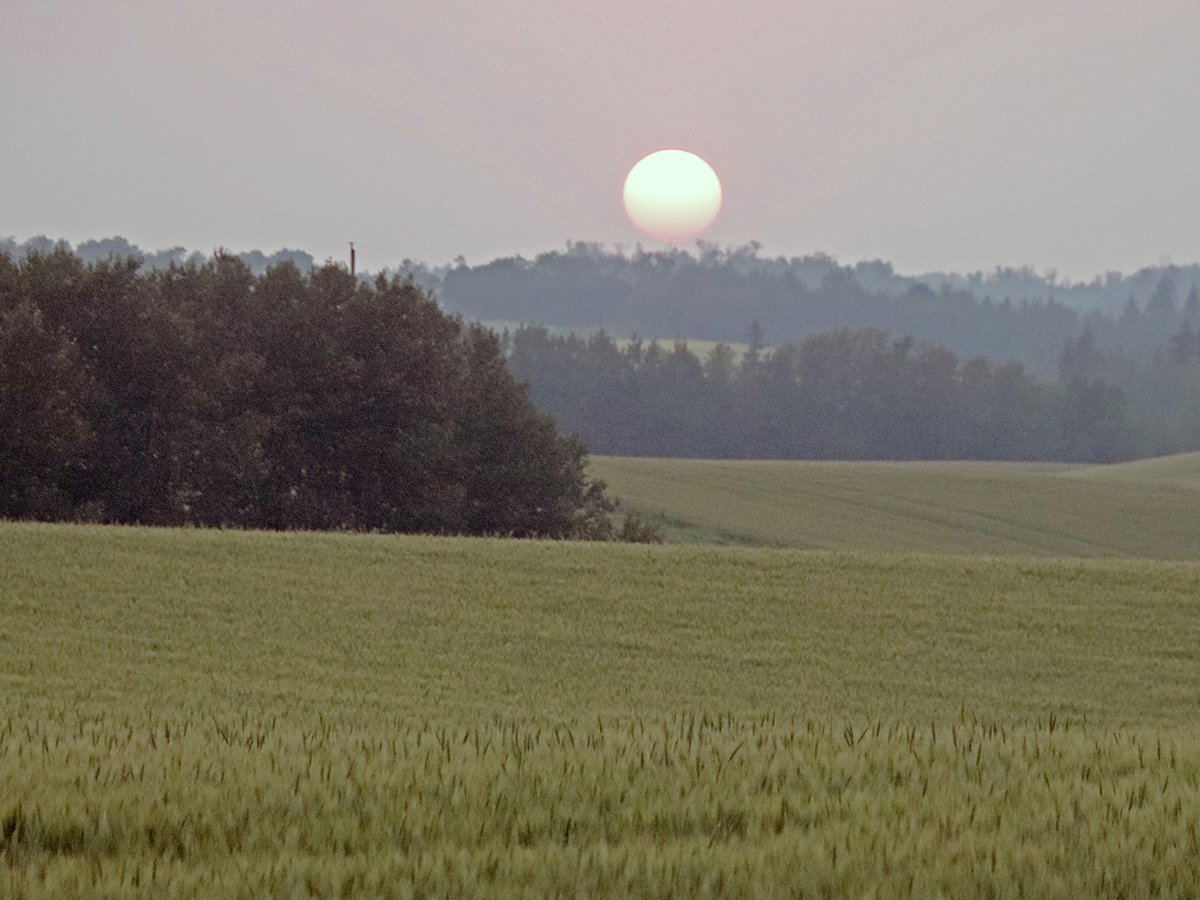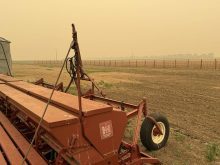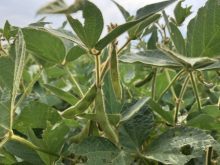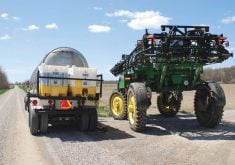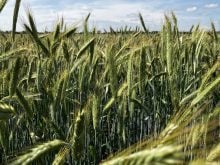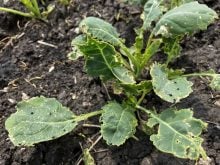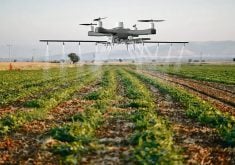Glacier FarmMedia – Wildfire smoke has become a regular feature on the Prairie horizon, raising new questions about how haze and poor air quality might affect fieldwork, crop health and herbicide performance.
Will it affect herbicide efficacy? Is it safe or effective to spray in smoky conditions? Could it influence inversions?
The short answer: it’s complicated — but there are some educated guesses and early-stage research that can help.
Read Also

Bunge’s crop mix is changing
Bunge has predominantly been a soybean processing firm, but that’s about to change after the merger with Viterra with softseed processing and grain merchandising gaining ground.
Don’t delay spraying
Tom Wolf, a longtime spray expert and contributor to Sprayers101.com, says while there’s no direct research on the impact of wildfire smoke on herbicide application, some inferences can be drawn based on how smoke affects plant growth, solar radiation and atmospheric conditions.
“It is difficult to say, because we don’t have very specific information on the effect of smoke on the spray operation itself,” Wolf says. “We do have some information on plant growth, so we can infer a few things about herbicide performance that might be a result of its effect on plant growth.”
One of the key concerns, he says, is that wildfire smoke may reduce thermal turbulence during the day. This turbulence plays an important role in spraying by helping droplets settle into the canopy and by dispersing them to minimize drift. Smoke blocks sunlight, reducing surface heating and weakening the air mixing that creates thermal turbulence.
“So it’s possible that if drift occurs, it will likely have a longer reach,” he says.
On the other hand, the effect of smoke at night might actually be positive. Wolf says it’s possible smoke could suppress nighttime inversions by trapping heat near the surface. If that happens, it could delay the onset or reduce the severity of an inversion.
Beyond air movement, smoke can also affect the plants themselves — potentially impacting uptake and efficacy. Smoke reduces photosynthesis in plants and overall plant growth, and Wolf points out that vigorous plant growth helps herbicides move through the plant effectively.
“If the plant hurts, then herbicide translocation hurts,” he says.
Another concern is atmospheric humidity. Smoke particles absorb moisture from the air, which can dry the atmosphere — not ideal for spraying. It means the spray droplets arrive a little smaller, and more prone to drift.
A drier atmosphere can also hinder herbicide uptake. Sprays are most effective when droplets remain wet on the leaf surface, since the herbicide is absorbed more efficiently during that time.
“We really want drops to stay wet as long as possible,” Wolf says.
Still, he emphasizes, any negative effects from smoke are likely to be minor compared to the risks of delaying a spray. Waiting too long can allow weeds to get ahead of the crop and start causing yield losses.
Sunlight dependency
As for specific herbicides that may be affected, Manitoba Agriculture weed specialist Kim Brown says smoke-related conditions — particularly, reduction in sunlight — may affect the performance of some light-activated herbicides.
“The main one I think of is Liberty,” she says. “We know that it requires a good dose of sunlight to really be effective.”
That’s because Liberty (glufosinate) relies on photosynthetic activity in the plant to facilitate uptake and injury. “We might see reduced activity from Liberty if it’s cloudy or smoky,” Brown says, though she emphasizes there hasn’t been formal study of this in smoky conditions specifically.
Another product that might be affected is Reglone (diquat), used for crop desiccation. “That’s another one where we know sunlight plays a role,” she says.
Brown also echoes Wolf’s point that inversions — the calm, cool conditions that trap spray droplets close to the ground and increase drift risk — could be influenced by smoke.
“Reduced sunlight could delay the warming of the ground in the morning, which may extend the inversion period,” she says. “But we really don’t know enough yet to quantify how often or how significantly that happens.”
Limited research, some emerging data
The lack of data is a recurring theme in talking about the effects of wildfire smoke on cropping systems. While most experts agree smoke is unlikely to affect yields in a major way, they also caution that very little research has been done.
While formal research remains sparse, growing recognition that wildfire smoke may be a recurring issue is beginning to drive more scientific attention.
A 2024 PhD dissertation from Kansas State University used satellite data and historical yield records to show that wildfire smoke exposure has been reducing soybean yields in parts of the U.S. northern Plains.
That’s certainly the expected result: less sunlight means less photosynthesis, which can lead to lower yields. But not all early findings point in the same direction.
Research out of Purdue University in Indiana found wildfire smoke may actually have a small benefit for corn under certain conditions.
The study looked closely at how smoke affects solar radiation — and what that means for corn.
“Smoke reflects sunlight,” says Dan Quinn, assistant professor of agronomy and extension corn specialist at Purdue. “But it also scatters it, and that can actually help tall crops like corn.”
Speaking at CropConnect in Winnipeg last year, Quinn explained that scattered, or diffused, light penetrates the corn canopy more deeply, which can boost photosynthesis in the lower leaves. That slight cooling can also reduce crop stress during extreme heat.
While he says it’s difficult to pin down the yield impact exactly, Quinn suspects the 2023 smoke in Indiana may have been a net benefit.
“It likely resulted in a net positive for corn grown in the state,” he said, but added that same benefit could be specific to corn because it’s a tall crop with a deep canopy.
A grey area
For now, there’s more inference than certainty around the effects of wildfire smoke on Prairie farming. With research still in early stages, farmers will have to make decisions based on best practices and observation rather than established data.
So, for now, Wolf’s advice still holds: don’t wait to spray.


